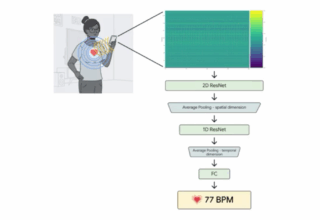Table of Contents
ToggleIntroduction
In Sanskrit, “Chatra” refers to a student or learner. The term “Shabd Roop” denotes the various grammatical forms that a word can take based on its case, number, and gender. This article explores the declensions of “Chatra,” illustrating how this term is used in different contexts.
Understanding Shabd Roop
Shabd Roop, or word forms, are essential in Sanskrit grammar because they reflect the grammatical function of words in sentences. For the word “Chatra,” which means “student,” understanding its Shabd Roop helps in forming grammatically accurate sentences and interpreting Sanskrit texts correctly.
Declension of “Chatra” in Sanskrit
Singular Forms
- Nominative Case (Subject):
- Form: छात्रः (Chātraḥ)
- Usage: Used to identify the subject of the sentence.
- Example Sentence: छात्रः विद्यालये अस्ति। (Chātraḥ vidyālaye asti.) – The student is in the school.
- Accusative Case (Object):
- Form: छात्रम् (Chātram)
- Usage: Used to denote the direct object of an action.
- Example Sentence: अहं छात्रम् पश्यामि। (Ahaṃ chātram paśyāmi.) – I see the student.
- Instrumental Case (By/With):
- Form: छात्रेण (Chātreṇa)
- Usage: Indicates the means or instrument by which an action is performed.
- Example Sentence: छात्रेण लेखनं कृतम्। (Chātreṇa lekhanam kṛtam.) – The writing was done by the student.
- Dative Case (To/For):
- Form: छात्राय (Chātrāya)
- Usage: Used to show the recipient of an action or benefit.
- Example Sentence: अहं छात्राय पत्रं लेखामि। (Ahaṃ chātrāya patraṃ lekhāmi.) – I write a letter to the student.
- Ablative Case (From):
- Form: छात्रात् (Chātrāt)
- Usage: Indicates the source or point of departure.
- Example Sentence: छात्रāt पुस्तकं प्राप्तम्। (Chātrāt pustakaṃ prāptam.) – The book was received from the student.
- Genitive Case (Of):
- Form: छात्रस्य (Chātrasya)
- Usage: Shows possession or relation.
- Example Sentence: छात्रस्य घरं सुन्दरम्। (Chātrasya gṛham sundaram.) – The student’s house is beautiful.
- Locative Case (In/On):
- Form: छात्रे (Chātre)
- Usage: Indicates location or time.
- Example Sentence: छात्रे पुस्तकं अस्ति। (Chātre pustakaṃ asti.) – There is a book with the student.
- Vocative Case (Addressing):
- Form: हे छात्र (He Chātra)
- Usage: Used when addressing someone directly.
- Example Sentence: हे छात्र! आगच्छ। (He Chātra! āgaccha.) – O student! Come here.
Dual Forms
- Nominative Case:
- Form: छात्रौ (Chātrau)
- Usage: Refers to two students.
- Example Sentence: छात्रौ विद्यालये गत्वा आगच्छतः। (Chātrau vidyālaye gatvā āgacchataḥ.) – The two students go to school.
- Accusative Case:
- Form: छात्रौ (Chātrau)
- Usage: Indicates the direct object when there are two.
- Example Sentence: अहं छात्रौ पश्यामि। (Ahaṃ chātrau paśyāmi.) – I see the two students.
- Instrumental Case:
- Form: छात्राभ्याम् (Chātrābhyām)
- Usage: By means of or with respect to two students.
- Example Sentence: छात्राभ्याम् लेखनं कृतम्। (Chātrābhyām lekhanam kṛtam.) – The writing was done by the two students.
- Dative Case:
- Form: छात्राभ्याम् (Chātrābhyām)
- Usage: For or to two students.
- Example Sentence: छात्राभ्याम् पत्रं लिखामि। (Chātrābhyām patraṃ likhāmi.) – I write a letter to the two students.
- Ablative Case:
- Form: छात्राभ्याम् (Chātrābhyām)
- Usage: From two students.
- Example Sentence: छात्राभ्याम् पुस्तकं प्राप्तम्। (Chātrābhyām pustakaṃ prāptam.) – The book was received from the two students.
- Genitive Case:
- Form: छात्रयोः (Chātrayoḥ)
- Usage: Of two students.
- Example Sentence: छात्रayoḥ घरं सुन्दरं। (Chātrayoḥ gṛham sundaram.) – The house of the two students is beautiful.
- Locative Case:
- Form: छात्रयोः (Chātrayoḥ)
- Usage: In/on two students.
- Example Sentence: छात्रayoḥ पुस्तकं अस्ति। (Chātrayoḥ pustakaṃ asti.) – There is a book with the two students.
- Vocative Case:
- Form: छात्रौ (Chātrau)
- Usage: Addressing two students.
- Example Sentence: हे छात्रौ! आगच्छताम्। (He Chātrau! āgacchatām.) – O students! Come here.
Plural Forms
- Nominative Case:
- Form: छात्राः (Chātrāḥ)
- Usage: Refers to multiple students.
- Example Sentence: छात्राः विद्यालये गत्वा आगच्छन्ति। (Chātrāḥ vidyālaye gatvā āgacchanti.) – The students go to school.
- Accusative Case:
- Form: छात्रान् (Chātrān)
- Usage: Direct object for multiple students.
- Example Sentence: अहं छात्रān पश्यामि। (Ahaṃ chātrān paśyāmi.) – I see the students.
- Instrumental Case:
- Form: छात्रैः (Chātraiḥ)
- Usage: With or by means of multiple students.
- Example Sentence: छात्रैः लेखनं कृतम्। (Chātraiḥ lekhanam kṛtam.) – The writing was done by the students.
- Dative Case:
- Form: छात्रेभ्यः (Chātrebhyaḥ)
- Usage: To or for multiple students.
- Example Sentence: छात्रेभ्यः पत्रं लिखामि। (Chātrebhyaḥ patraṃ likhāmi.) – I write a letter to the students.
- Ablative Case:
- Form: छात्रेभ्यः (Chātrebhyaḥ)
- Usage: From multiple students.
- Example Sentence: छात्रeभ्यः पुस्तकं प्राप्तम्। (Chātrebhyaḥ pustakaṃ prāptam.) – The book was received from the students.
- Genitive Case:
- Form: छात्राणाम् (Chātrāṇām)
- Usage: Of multiple students.
- Example Sentence: छात्राणाम् घरं सुन्दरं। (Chātrāṇām gṛham sundaram.) – The house of the students is beautiful.
- Locative Case:
- Form: छात्रेषु (Chātreṣu)
- Usage: In/on multiple students.
- Example Sentence: छात्रेषु पुस्तकं अस्ति। (Chātreṣu pustakaṃ asti.) – There is a book with the students.
- Vocative Case:
- Form: छात्राः (Chātrāḥ)
- Usage: Addressing multiple students.
- Example Sentence: हे छात्राः! आगच्छताम्। (He Chātrāḥ! āgacchatām.) – O students! Come here.
Conclusion
The term “Chatra” (student) in Sanskrit has various forms depending on the grammatical case, number, and usage. Understanding these forms, or Shabd Roop, is crucial for constructing grammatically correct sentences and interpreting texts accurately in Sanskrit. Mastery of these declensions will enhance your proficiency and appreciation of this ancient.


















